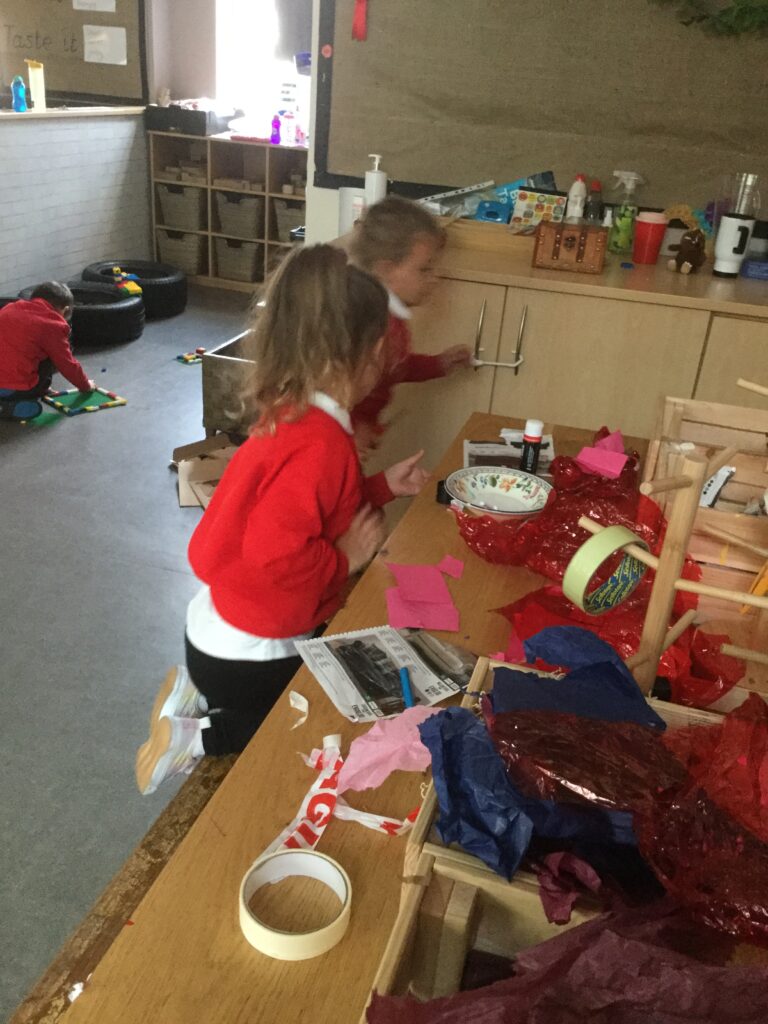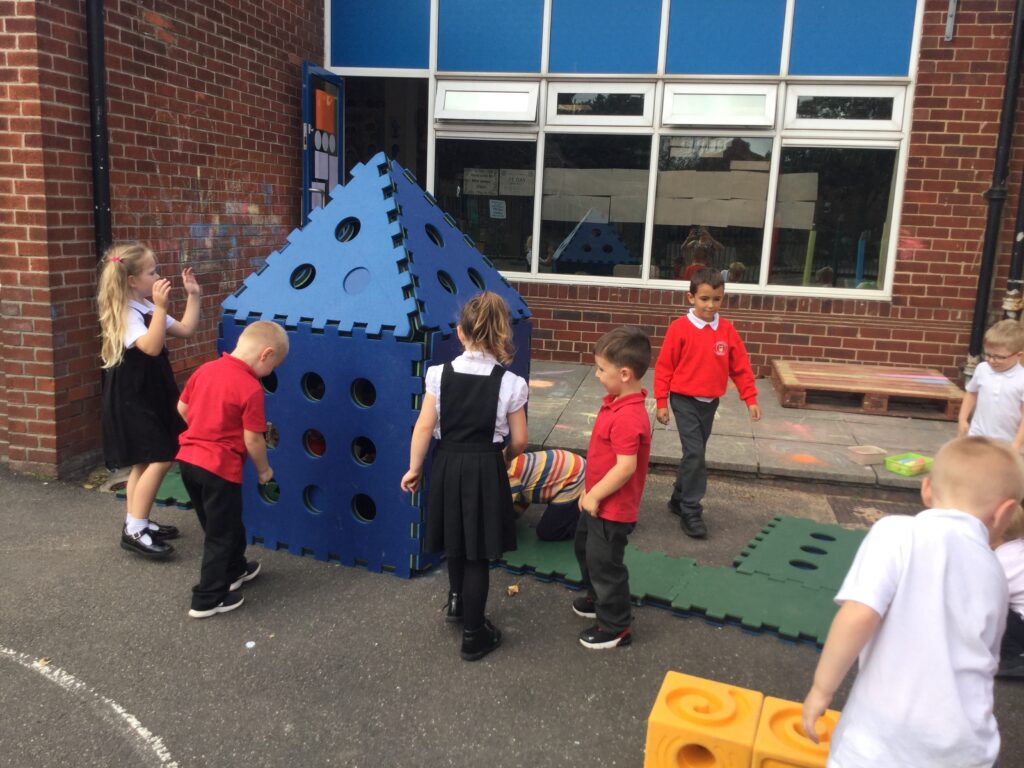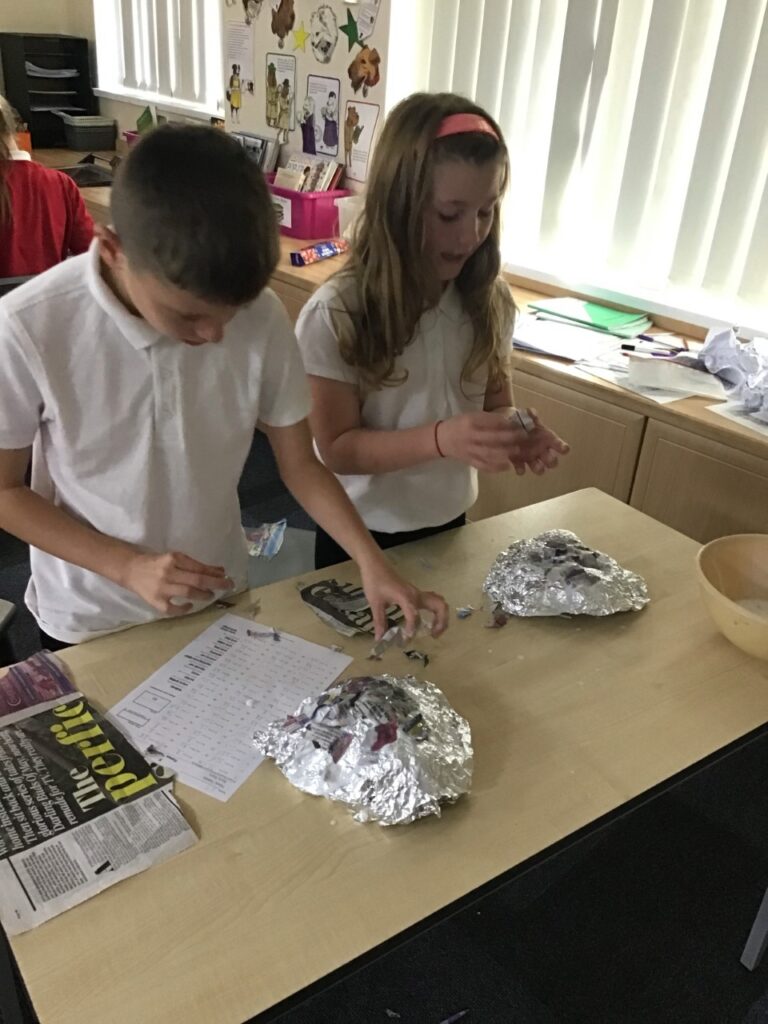Design and Technology is an inspiring, rigorous and practical subject. At Grangetown Primary, through our DT curriculum, we are providing our children with the opportunity to be creative through designing and making. It encourages the children to learn to think and intervene creatively to solve problems both as individuals and as part of a team. The children are given plenty of opportunity to reflect upon and evaluate past and present design technology, they are encouraged to be innovators.
The children are taught to research, design, make and evaluate. They learn about real life structures. They will understand and apply the principles of nutrition and learn basic cooking skills. Children will design and make a range of products that are age appropriate.
Key skills and key knowledge have been mapped across the school to ensure progression between year groups. DT projects are taught over a term so that children’s learning is focussed throughout each unit of work. Skills are taught progressively to ensure all children are able to learn and practice in order to develop as they move through school.
Intent
At Grangetown Primary, we ensure the children are taught all 5 strands of Design and Technology; Mechanical Systems, Structures, Textiles, Food and Nutrition and Electrical Systems. The children are taught to research, design, make and evaluate by working creatively to solve problems both as individuals and as part of a team. In each year group, they follow the process of ‘Intent, Inspire and Innovate.’ The ‘Intent’ involves making sure the product is designed for someone for a purpose. The ‘Inspire’ involves the children researching products already on the market, testing them, making prototypes, experimenting with different designs/materials etc. Finally, the ‘Innovate’ phase involves the children being encouraged to be innovators. During this phase they take into consideration their continuous evaluation and use the knowledge of products they have gathered along the way to make their final product.
Key skills and key knowledge have been mapped across the school to ensure progression between year groups. DT projects are taught over a term so that children’s learning is focussed throughout each unit of work. Skills are taught progressively to ensure all children are able to learn and practice in order to develop as they move through school.
Phase 1:
Within EYFS it has been established that all children must be provided with opportunities to share their ideas, explore materials, experiment with a range of media and create using their imagination. We believe that our environment must offer the children the opportunity to explore their ideas and interests. Expressive Arts and Design is one of the four specific areas and children must be encouraged to experiment and use learned skills to explore a wide range of media and materials in order to promote their ability to explore and understand their world.
Pupils are taught:
- To develop their imaginations so they can express themselves in a variety of ways
- To develop independent learning
- To have first-hand experiences to explore with all their senses
- To use what they have learnt about media and materials in original ways
- To think about uses and purposes of materials and to represent their own ideas
Phase 2:
By the end of each key stage, pupils are expected to know, apply and understand the matters, skills and processes specified in the relevant programmes of study.
Pupils are taught:
- To research and develop design criteria to inform the design of innovative. functional, appealing products which are fit for purpose.
- To develop, model and communicate their ideas through discussion, annotated sketches and prototypes
- To select from a wider range of tools and equipment to perform practical tasks (eg, for cutting, shaping, joining, finishing) and use these safely and appropriately.
- To select from and use a wider range of materials and components including construction materials, textiles and ingredients according to their functional properties and aesthetic qualities.
- To understand and apply the principles of a healthy and varied diet
- To design and cook a variety of dishes
- Evaluate their ideas and products against their own design criteria and consider the views of others to improve their work.
Phase 3:
Pupils are taught to develop their techniques, including their control and their use of materials, with creativity, experimentation and an increasing awareness of the impact on their finished product in relation to their design criteria.
Pupils are taught to
- Apply their understanding of how to strengthen, stiffen and reinforce more complex structures
- Understand and use mechanical systems in their products (for example, gears, pulleys, cams)
- Understand and use electrical systems in their products [for example, series circuits incorporating switches, bulbs, buzzers and motors]
- Generate, develop, model and communicate their ideas through discussion, annotated sketches, cross-sectional and exploded diagrams, prototypes, pattern pieces and computer-aided design
- Investigate and analyse a range of existing products
- Understand how key events and individuals in design and technology have helped shape the world
- Prepare and cook a variety of dishes using a range of cooking techniques
- Understand seasonality, and know where and how a variety of ingredients are grown, reared, caught and processed.
Implementation
At Grangetown Primary School, our DT curriculum is designed to meet the needs of our pupils ensuring our curriculum intentions are met. We do this through:
- Following a whole school curriculum-that covers a range of skills and techniques from both past and present.
- Termly units: Each year group will teach 3 DT projects over the year, 1 project per term.
- Whole class /mixed-ability lessons– The subject content, skills and techniques taught, are made accessible to all children; with special provision made for those children who may need it.
- Good quality lessons– Teachers present good quality lessons which incorporate the teaching of the design process along with drawing skills and techniques. The skills of designing, making and evaluating are reinforced through all DT projects. It is a journey the children experience from Foundation and structures the delivery of DT throughout school. This could be making an animal enclosure in phase 2 to creating their own frame structure in phase 3.
- Critical thinking – Is encouraged when discussing and evaluating products, through the use of both closed and open-ended questions. Pupils are also encouraged to use and respond to similar questions in response to their own work.
- Broad subject matter: Involves the study of a range of culturally and ethnically diverse designers and craftspeople both past and present.
- Fostering an understanding – The design process should be rooted in real life, relevant contexts to give meaning to children’s learning.
- Assessment (teacher): Is to be completed at the end of each unit of work, using the school’s assessment sheet.
- Assessment (self/peer)Is used as a vital tool for establishing the progress the children are making and for identifying the next steps in learning
Impact
The impact of our DT curriculum within Phase 1 is to meet the needs of all our children, including the disadvantaged and SEND children. We spend time looking at and evaluating how our children are learning which is achieved through talking to the children and observing their learning experiences. We then use this information to provide the children with a learning environment that meets their needs in DT. We can then plan learning experiences and Next Steps to ensure that knowledge and skills are built on cumulatively. A combination of rich learning experiences is the best way to develop happy and curious children!
The impact of our DT curriculum within Phases 2 & 3 is that the majority of children, in our school, are able to;
Investigate existing products and create their own design criteria, exploring their ideas to produce creative practical work, recording their experiences and evaluating their work effectively.
By the time children leave our school they will have:
- An excellent attitude to learning and independent working.
- The ability to use time efficiently and work constructively and productively with others.
- The ability to carry out thorough research, show initiative and ask questions to develop a detailed knowledge of users’ needs.
- The ability to act as responsible designers and makers, working ethically, using finite materials carefully and working safely.
- A thorough knowledge of which tools, equipment, and materials to use to make their products.
- The ability to manage risks well, to manufacture products safely and hygienically.
Take a look at what we get up to in our Design Technology lessons…
Phase 1 in action…









Phase 2 in action…



Phase 3 in action…








